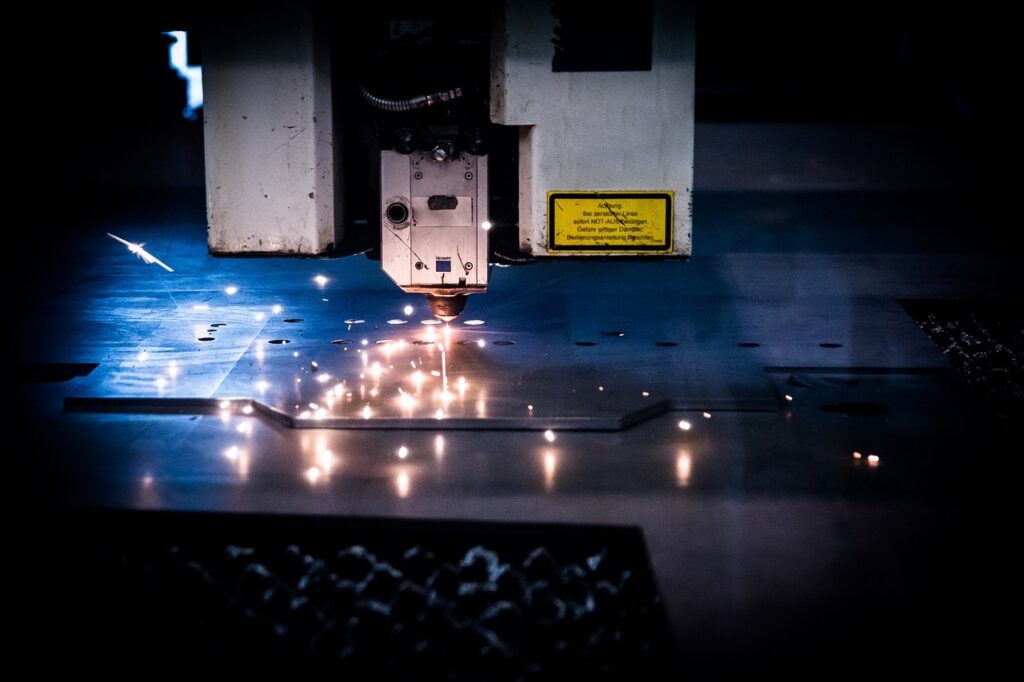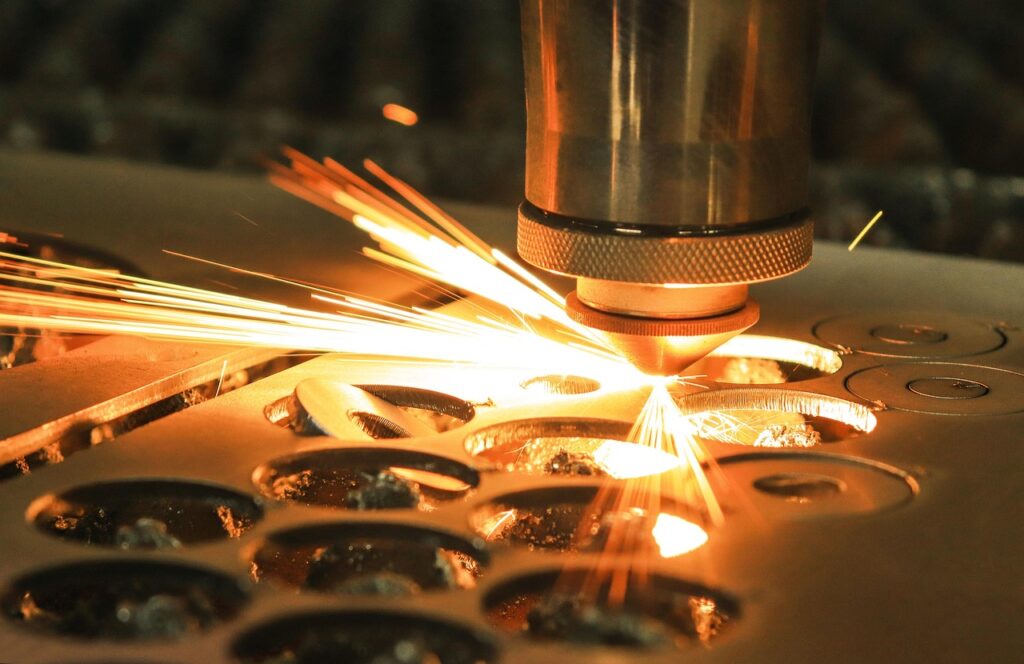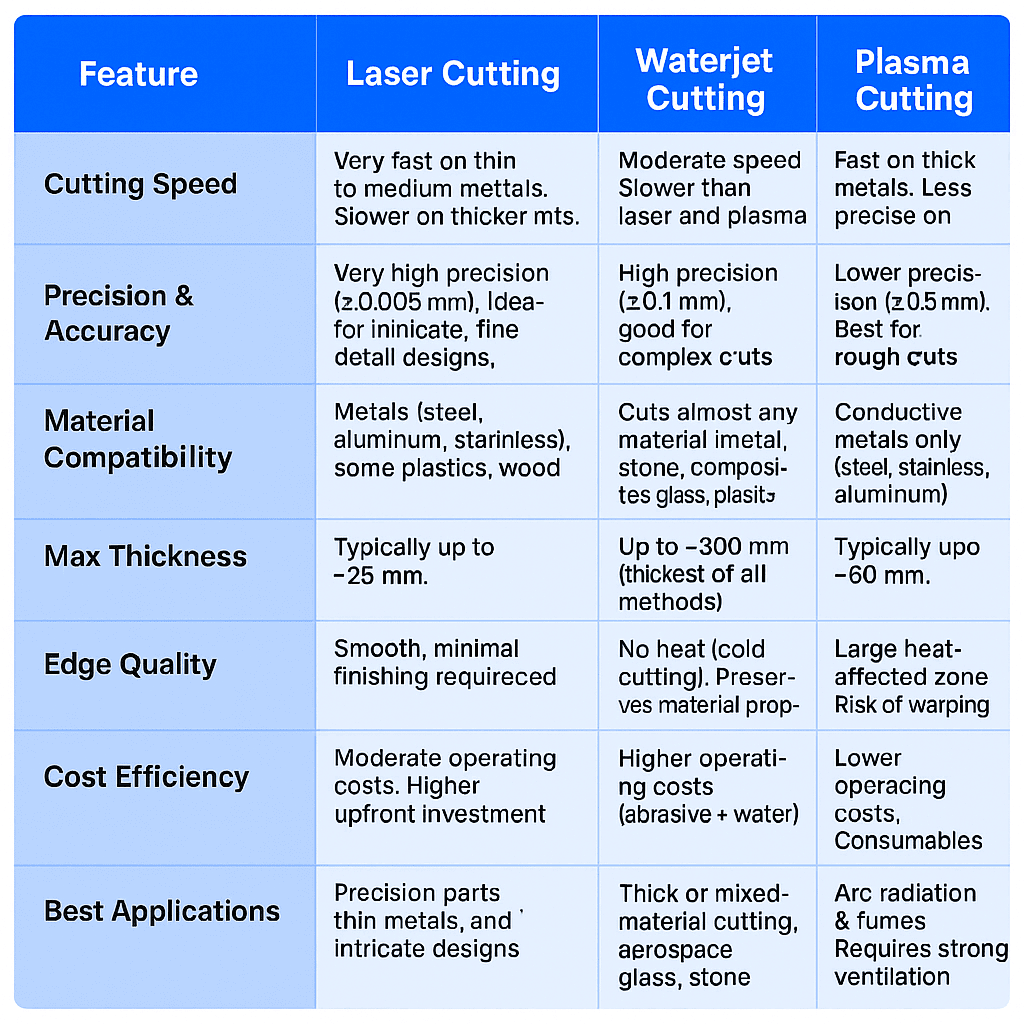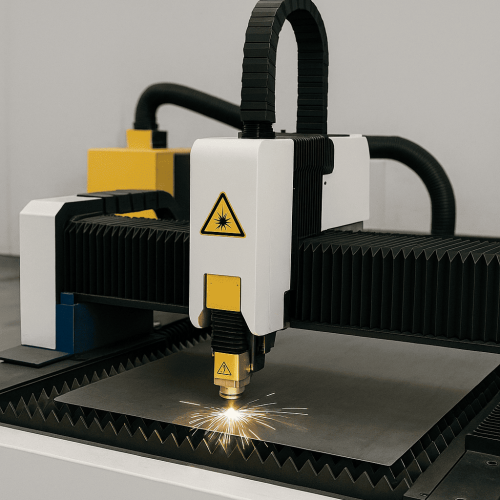Gases used in Laser cutting
Laser cutting gases
Laser cutting has become one of the most precise and reliable methods for processing metal in today’s manufacturing industry. While the laser beam does the cutting, it’s the assist gases that make a big difference in how clean, fast, and cost-effective the process turns out to be.
As the concentrated beam slices through the material, an assist gas clears away molten metal from the cut, leaving behind a smoother finish. They also help protect the laser optics from damage caused by sparks and debris, reducing downtime and saving on maintenance costs.
In this article, we’ll take a closer look at why laser cutting gases are essential, how they influence cut quality and speed, and what factors go into choosing the right gas for different materials.

Best Laser cutting services by Cyclotron Industries. We offer high precision, fast and accurate laser cutting solutions for any kind of metal applications

What are Assist Gases?
- In laser cutting, gases are not passive elements. They actively shape the process by clearing molten metal, removing debris, cooling the cutting area, and reducing the thermal impact on the material.
- The choice of gas directly affects the chemical and thermal behavior of the material being cut. Oxygen, for example, produces additional heat through an exothermic reaction. This makes it effective for cutting thicker materials such as mild steel, since the gas reduces the demand on the laser beam itself.
- Over time, the use of assist gases has grown alongside advancements in laser cutting technology. In the beginning, oxygen was widely used because of its reactive properties. As industries began demanding finer cuts, nitrogen and argon became common choices. Compressed air also entered use as a more economical option. With the development of fiber lasers and the increasing demand for precision in fields such as aerospace and automotive, specialized gas mixtures and argon-helium blends are now used to achieve highly accurate and efficient results.
Gases used in laser cutting
- Oxygen: Oxygen is one of the most widely used laser cutting gases, mainly because of its reactive properties. When oxygen interacts with the laser beam, it triggers an exothermic reaction that releases additional heat. This added energy increases cutting speed and makes it possible to cut through thicker plates, especially mild steel.
The drawback, however, is oxidation at the cut edges. While this may be acceptable in applications where post-processing is planned or where surface finish is not critical, it is less desirable for parts requiring high precision and clean edges. In such cases, additional steps like grinding or deburring may be necessary. Oxygen is cost-effective as a gas choice, but post-processing can increase the overall cost in high-precision work.
2. Nitrogen: Nitrogen is an inert, non-reactive gas that prevents oxidation during the cutting process. Unlike oxygen, it does not chemically interact with the metal, which means edges remain free of discoloration and oxidation. Because of this, nitrogen is ideal for applications where clean, precise cuts are required and minimal post-processing is desired. It is preferable for stainless steel, aluminum, and other non-ferrous metals
3. Argon: Argon is also an inert gas and does not react chemically with the material being cut. It is especially useful for metals that react negatively to nitrogen, such as titanium. Argon is often chosen for specialized applications in industries like aerospace and defense, where purity of finish and a controlled cutting environment are critical.
Although more expensive than other assist gases, argon offers unique benefits. It cools the cutting zone quickly, producing a narrow heat-affected zone. This is particularly valuable when working with metals that can become brittle if exposed to excessive heat
4. Compressed air: Compressed air is one of the most affordable and widely available assist gases. It contains a natural mix of nitrogen and oxygen, making it suitable for cutting a range of materials, especially thinner sheets of steel, aluminum, and stainless steel. While it may not always provide the same level of edge quality as pure nitrogen or argon, it offers a good balance between cost and performance, which is why it has become one of the most popular options in general laser cutting operations.
Choosing the right assist gases for laser cutting?
Selecting the right assist gas depends on factors like the thickness of the material to be cut, its thermal properties, the type of finish required, and the acceptable level of post-processing. Budget considerations and the need for high-purity cuts also play a major role.
For example, oxygen is good for thicker mild steel, while nitrogen is chosen when clean, oxidation-free edges are paramount. Argon is chosen for specialized aerospace applications demanding high-precision cutting. Whereas the compressed air offers a practical balance of affordability and performance for general cutting.
Conclusion
Assist gases play a critical role in achieving the desired cutting speed, precision, and finish. By understanding how each gas works and what it offers, manufacturers can choose the most suitable option for their specific needs.
At Cyclotron Industries, we carefully select assist gases to match the material and application, ensuring clean, accurate, and cost-effective results. If you’d like to learn more about the gases we use and how we deliver high-quality laser cutting services, do get in touch with us.
If you are looking for laser cutting services near by, you are at the right place: Cyclotron Industries. We specialize in delivering precision laser-cut components with tight tolerances and perfect fitment, right here in Pune. Get in touch with our team and let’s start working on your next project.
Best Laser cutting services by Cyclotron Industries. We offer high precision, fast and accurate laser cutting solutions for any kind of metal applications

Laser cutting is a leading precision manufacturing method known for its versatility and accuracy. Discover its process and benefits in this guide.
Gases used in laser cutting include Oxygen, Nitrogen, Compresses gases, etc. Each gas has its own application for various metal cutting.
Everything about how ai for improving laser cutting is used worldwide. Iot and ai have been transforming the metal cutting industry and it’s trends.
List of Top 5 laser cutting machine manufacturers in India. A detailed comparison along with the prices of each brands mentioned.



